Perugia, a perfect blend of history, culture and gastronomy
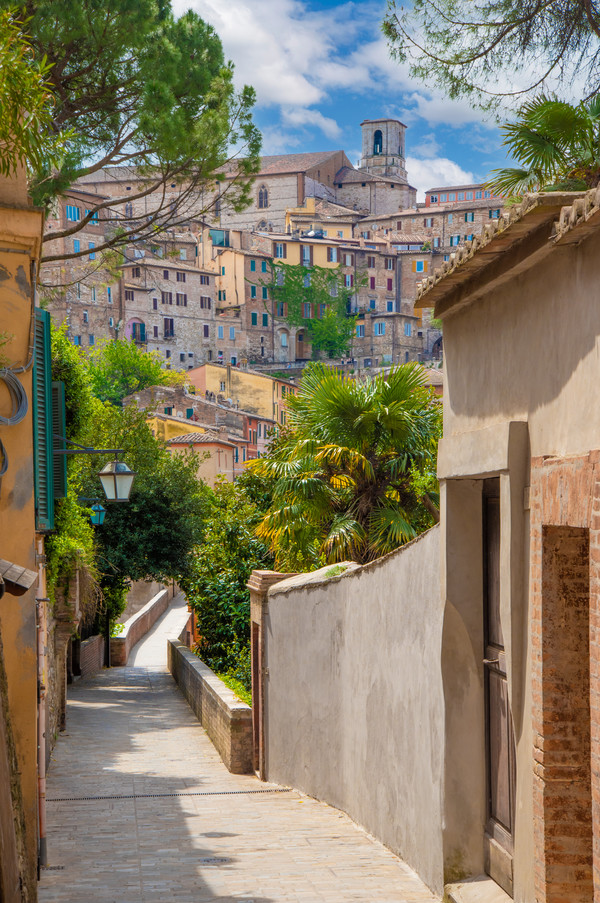
[아츠앤컬쳐] 이탈리아 중심부에 위치한 페루자는 움브리아 주의 주도이자 역사와 문화, 미식의 도시다. 중세의 매력이 가득한 페루자는 로마의 요새가 되기 전에는 원래 에트루리아 도시였다. 잘 보존된 에트루리아 우물과 기원전 3세기로 거슬러 올라가는 고대의 도시 진입 관문이었던 에트루리아 아치를 포함하여, 그 뿌리에 대한 증거를 도시 전역에서 볼 수 있다.
가장 주목할만한 기념비적 장소는 콰트로 노벰브레 광장으로, 중앙에 눈부시게 아름다운 13세기의 분수인 폰타나 마조레가 있다. 성서의 장면들과 황도 12궁 별자리가 장식된 이 분수는 가히 중세 예술의 걸작이라 할 만하다. 또한, 콰트로 노벰브레 광장을 내려다보고 있는 장엄한 고딕 양식의 팔라초 데이 프리오리는 유명한 화가 페루지노와 피에로 델라 프란체스카의 작품을 포함하여 인상적인 움브리아 미술 컬렉션을 자랑하는 움브리아 국립 미술관이 들어서 있다.

꼭 가봐야 할 또 다른 명소는 교황 바오로 3세가 16세기에 건설한 지하 요새인 로카 파올리나다. 내부의 미로 같은 길들을 탐험하면서 중세 시대에 이 지하 요새가 가졌던 전략적 중요성에 대해 배울 수 있다. 마지막으로, 이탈리아어와 이탈리아 문화의 교육, 연구, 보급에 전념하는 가장 오래되고 권위 있는 페루자 외국인 대학교를 언급하지 않을 수 없다. 이탈리아어를 배우는 학생들을 위한 교육기관으로 세계적 명성을 누리고 있는 이 대학의 본부는 페루자 중심부에 자리잡은 웅장한 팔라초 갈렌가 스튜어트 궁전에 들어서 있다.
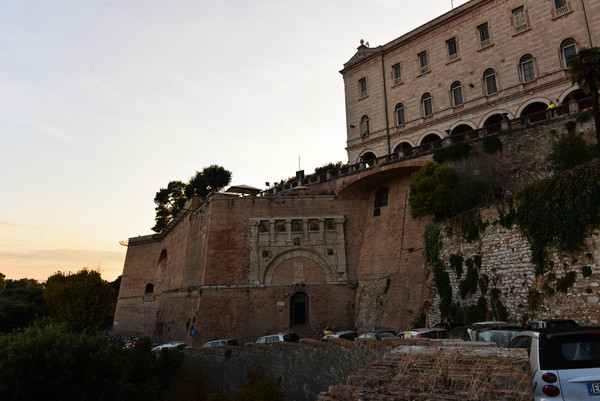
페루자의 건축 유산 못지 않게 음식 문화 역시 지역의 농업적 특성과 미식 전통을 반영하는 다양한 전통 요리를 선보인다. 페루자를 방문할 때 꼭 먹어봐야 할 전통 요리로는, 우선 ‘토르타 알 테스토’가 있다. 움브리아 전통 음식의 기본이 되는 이 토르타는 효모를 넣지 않고 만든 얇은 빵의 일종으로, 테스토라고 부르는 특수 무쇠 팬에서 구워내어 프로슈토, 소시지, 치즈 등 다양한 재료로 속을 채운 것이다. 그리고 거위 소스를 넣은 ‘뇨키 꼰 라구 도카’는 움브리아 전통의 풍부한 맛을 지닌 푸짐한 요리인데 속을 편안하고 든든하게 해 준다.
디저트로는 보통 카니발이나 부활절 축제 기간에 먹는 페루자의 전통 케이크인 ‘챠라미콜라’가 있다. 커다란 고리 모양의 챠라미콜라는 알케르메스와 같은 진홍색 리큐어를 첨가하여 밝은 붉은색을 띠는 것으로 유명하다. 위에 하얀 로열 아이싱을 바르고 형형색색의 설탕 스프링클을 뿌려 마무리한 생기발랄한 느낌의 케이크이다.
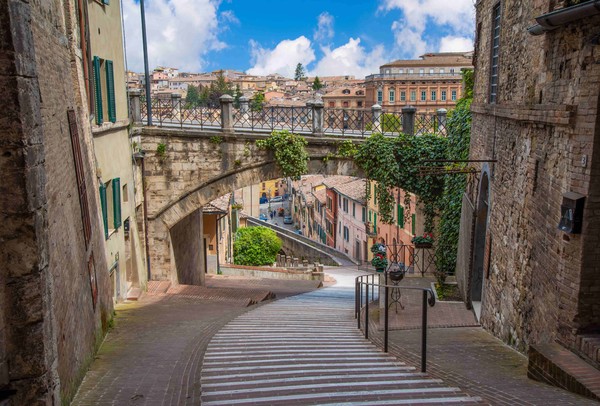
아름다운 명소들과 맛있는 요리로 가득한 페루자는 재즈 애호가들에게도 빼놓을 수 없는 중요한 도시다. 매년 7월, 세계적으로 유명한 ‘움브리아 재즈 페스티벌’이 바로 이곳 페루자에서 열리기 때문이다. 이 기간에는 세계 최고의 재즈 뮤지션들과 수천 명의 음악 애호가들이 전 세계에서 모여든다. 축제 기간 중, 도시 전역의 다양한 역사적 명소에서 콘서트가 열리며 마법 같은 분위기를 자아낸다. 재즈 애호가라면 반드시 방문해 봐야 한다.
페루자는 역사, 문화, 미식의 우수성이 더할 나위 없이 완벽한 조화를 이루는 도시다. 이 매력적인 도시를 방문하는 것은 시대를 초월한 이탈리아 문화 유산과 환대의 정수에 깊이 빠져보는 멋진 탐험이 될 것이다.
번역 감수 알렉산드라 돌치
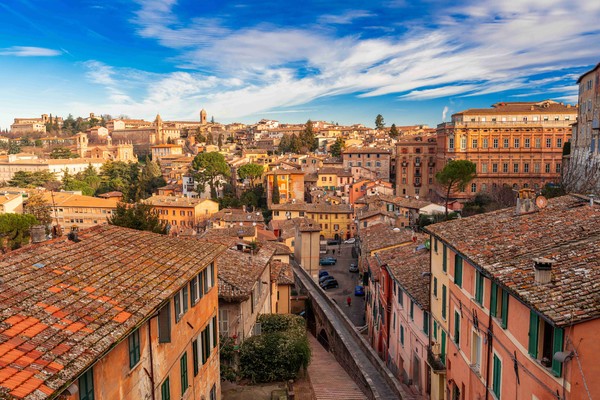
Perugia, a perfect blend of history, culture and gastronomy
Built in the heart of Italy, Perugia is the capital of the Umbria region and it is a city rich in history, culture, and culinary delights. With its medieval charm, this city offers a unique and immersive experience for visitors.
Perugia was originally an Etruscan city before becoming a Roman stronghold. Evidence of its roots can be seen all throughout the city, including the well-preserved Etruscan Well and the Etruscan Arch, an ancient gateway to the city dating back to the 3rd century BC.
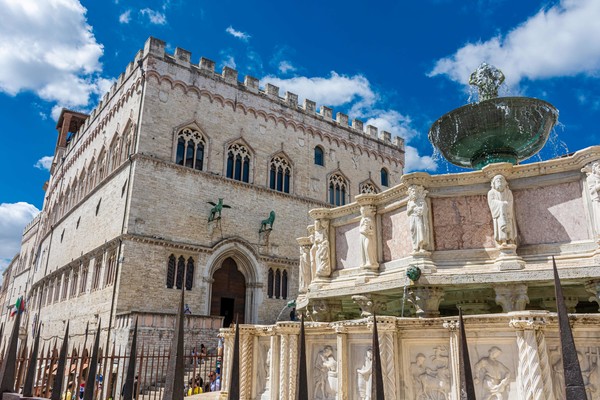
One of the most notable monuments is Piazza IV Novembre. This central square features the stunning Fontana Maggiore, a 13th-century fountain adorned with intricate carvings depicting biblical scenes and zodiac signs, making it a masterpiece of medieval art. Overlooking Piazza IV Novembre, another stunning monument we can discover is the Palazzo dei Priori, a majestic Gothic palace housing the Umbria National Gallery, which boasts an impressive collection of Umbrian art including works by the famous painters Perugino and Piero della Francesca.

Another place definitely worth a visit is the Rocca Paolina, a remarkable underground fortress built in the 16th century by Pope Paul III. Visitors can explore its labyrinthine corridors and learn about its strategic importance in medieval times.
Finally, an important mention must be made for the University for Foreigners of Perugia, the oldest and most prestigious Italian institution dedicated to the teaching, research, and dissemination of the Italian language and culture. An internationally renowned organization for students of the Italian language and situated in the magnificent Gallenga Stuart Palace, in the heart of Perugia.
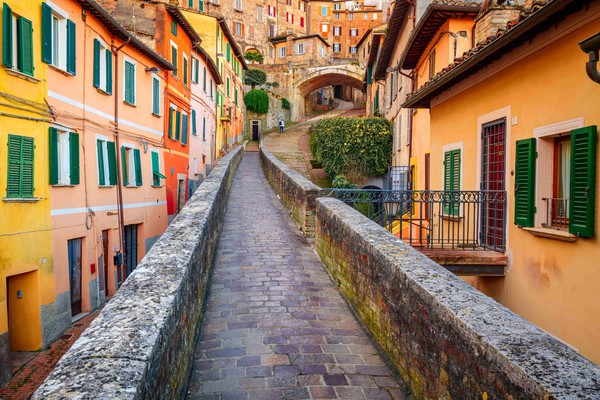
Perugia’s architectural heritage is impressive and its culinary scene is no less, offering a variety of traditional dishes that reflect the region’s agricultural characteristics and culinary traditions. Here are some of the must-try traditional dishes when visiting Perugia: First, “Torta al Testo” is a type of flatbread that is a staple in Umbrian cuisine. It is cooked on a special iron plate called "testo" and can be stuffed with a variety of fillings such as prosciutto, sausage and cheese. Another iconic recipe of the region is the “Gnocchi con Ragù d’Oca”, or gnocchi with goose sauce, a comforting and hearty dish that showcases the rich flavors of Umbrian cooking. Finally, as a dessert, “Ciaramicola” is a traditional Perugian cake that is typically made during Carnival or Easter festivities. This vibrant, ring-shaped cake is known for its bright red color, which comes from the addition of liqueur. It is then topped with a white icing and colorful sugar sprinkles.
Perugia, a city full of beautiful monuments and delicious dishes, is also a great destination for Jazz lovers. Every July, Perugia hosts the world-famous “Umbria Jazz Festival,” attracting top international jazz musicians and thousands of music enthusiasts. The festival's concerts take place in various historic venues across the city, adding to the magical atmosphere. Definitely a must-visit for music lovers.
Perugia is a city where history, culture, and culinary excellence intertwine seamlessly. A visit to this charming city is not just a trip; it’s a deep dive into the timeless essence of Italian heritage and hospitality.

글 | 미켈라 린다 마그리 Michela Linda Magrì
Director at the Italian Cultural Institute in Seoul
Cultural Attachè of the Embassy of Italy in Korea

